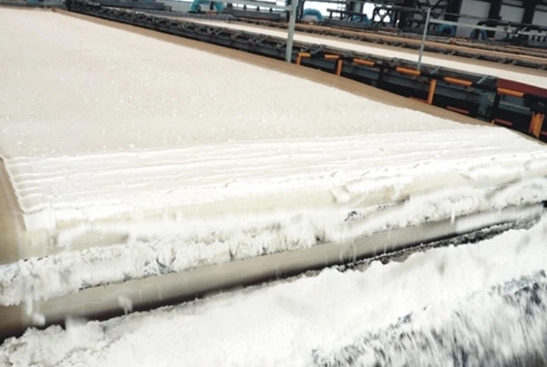
Horizontal belt filter cloth is designed to work with horizontal belt filters and serves as a crucial component in industrial liquid-solid separation processes. It is not only a filtration medium but also a hidden driving force behind product purity, production efficiency, and process reliability.
Continuous High-Efficiency Operation
Horizontal belt filtration operates continuously. Feeding, filtration, washing, dewatering, and discharge take place in different sections of the filter belt, greatly improving production efficiency. This makes it ideal for large-scale industrial applications.
Strong Regeneration Ability
Through cleaning procedures, the filter cloth can restore its filtration performance, significantly extending service life.
Versatility in Handling Slurries
From easily filterable coarse particles to fine particles, proper selection of filter cloth and process parameters allows it to meet diverse requirements across multiple industries.

Improper filter cloth selection can result in low efficiency—or even complete production shutdown. Key factors to consider include:
Polyester (PET): Excellent acid resistance, good abrasion resistance, cost-effective.
Polypropylene (PP): Strong resistance to acids and alkalis, though with lower temperature resistance.
Nylon (PA): Exceptional abrasion resistance but weaker acid resistance.
Plain Weave: Densest structure, excellent cake release, produces clearer filtrate but may clog more easily.
Twill Weave: Flexible, clog-resistant, and long-lasting—currently the most popular choice.
Satin Weave: Very smooth surface with excellent cake release, though less compact in structure.
Air Permeability: Determines ease of liquid flow. The finer the particles, the lower the required permeability.
Pore Size: Directly affects particle retention.
Surface Treatment: Options such as calendaring, coating improve cake release, reduce clogging, or enhance surface smoothness.
Cleaning: Regular online or offline cleaning with water or chemical agents removes embedded particles, restores filtration performance, and prolongs service life.
Wear & Damage: Monitor scraper alignment, belt tracking, and foreign objects that may cause mechanical damage. Replace the cloth promptly if irreversible damage occurs.
Clogging: The most common reason for premature filter cloth retirement. Proper cleaning procedures and suitable surface treatments help delay clogging.
Horizontal belt filter cloth plays a vital role in industrial filtration processes. From mining and chemicals to pharmaceuticals, food processing, and environmental industries, it ensures cleaner, more efficient, and more sustainable production.